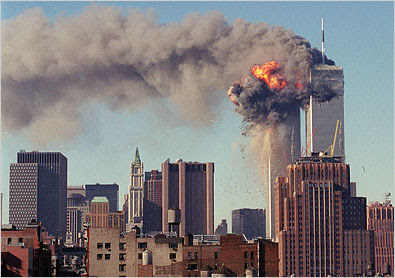The role of stakeholders in the Sri Lankan destination branding process
Destination branding can be defined as a way to communicate a destination’s exclusive identity by differentiating a destination from its competitive tourism portfolios (Morrison & Anderson, 2002). Similar to the general facts on brands, destination brands exercise two important functions: identification and differentiation. In the branding literature, the meaning of “identification” involves the explication of the source of the product to consumers. While a product in general terms represents a physical offering, which can be easily modified, a place as a product is a large entity which contains various material and non-material elements to represent it (Florek, 2005) To set the destination apart from the competition it will need a unique selling point/proposition (Benett and Salvani, 2003; Mundt, 2002; Morgan et al. 2002, 2004, 2011). For example, a new national brand identity was selected by the Sri Lankan Tourism Authority and the Sri Lankan national brand was renamed "The Wonder of Asia" in 2013. The key challenge at this time is to generate acceptance of the new brand and realise its potential success. Whilst the brand has been linked with the successful transformation of the social and political system, ‘The Wonder of Asia’ branding faces the challenges of acceptance-related issues between its stakeholders (Ministry of Economic Development, 2011; Sri Lanka Tourism Development Authority, 2012). Mundt (2002) notes that one of the main factors contributing to a destination brand’s inability to be successful is its lack of a core focus. Executive Director of the Institute of Policy Studies (IPS) of Sri Lanka, Dr. Kelegama questioned the uniqueness of the “Wonder of Asia” branding strategy, stating ’What are the wonders that Sri Lanka possesses?” Two items that are noteworthy are Sigiriya[1] and the gathering of elephants in Minneriya[2]. Other than these two, one cannot think of any other wonder in Sri Lanka’ (Sunday Times, 2014).
(Elephants in Minneriya National Park)
(Sigiriya rock fortress)
Sri Lankan brand is also currently facing many acceptance-related issues due to negative international media reports, international lobby groups, and US-led international UN Human Rights Council inquiries into alleged war crimes. Failure to address these issues may create a negative brand image for Sri Lanka. Therefore, it is questionable whether the branding of the destination is correctly placed. Poor evaluations for branding and governance may lead to a steady negative change in destination brand reputation – particularly for failure to act as a responsible agent of its environment and its globally significant traditions (Anholt, 2010). This loss of value of the brand could have longer-term consequences for the Sri Lankan brand name. Mundt (2002) argues about the vagueness of the term ‘destination branding’ as a successful brand requires total control of a product or service. However, in destination branding it is highly difficult task to gain total control of a product or service as one sole destination marketing organisation does not control the marketing mix or the branding at destination level. Mundt also argues that in many cases the capability to brand a destination has been overestimated in tourism organisations. The strength of a destination depends not only upon its branding, but also on other factors such as stakeholders and politics (Mundt, 2002).
(Voting on resolutions began March 27, 2014 at the 25th Session of the Human Rights Council.)
Politics and destination branding
Destination and national branding is undoubtedly an exceedingly politicised activity. The process of destination representation involves many key parties mainly from government agencies to business, tourist and even geopolitical stakeholders. All of these key parties are trying to impose their views about the destination and consciously or unconsciously they are adding new denotations to the representation of the destination (Olins, 2008).
The roles and powers of the stakeholders involved in the destination branding process help to shape policies of national and destination branding. As debated by many destination branding experts (Pritchard and Pride 2002; Anholt 2007; Dinnie 2009) governments are more responsible for the destination branding process. A successful destination branding strategy is a direct result of long-term dialogue between different national sectors and private sectors which are facilitated by government-led agencies.
Government sectors have an exceptionally difficult rebranding task in destinations which have been affected by both external and internal pressures, such as economic downturns, terrorist attacks, political instability, and natural disasters (Sheehan and Ritchie, 2005).In this research, the political involvement of national and destination branding will be carefully investigated.
Mundt (2002) argues that the vagueness of the term ‘destination branding’ as a successful brand requires total control of a product or service. However, in destination branding it is a highly difficult task to gain total control of a product or service as one sole destination marketing organisation does not control the marketing mix or the branding at destination level. Mundt also argues that in many cases the capability to brand a destination has been overestimated in tourism organisations. The strength of a destination depends not only upon its branding, but also on other factors such as stakeholders and politics (Mundt, 2002). Policies for destination marketing can be formulated which will help in providing stability for any future decisions and the operation of the tourism sector (Dutta and Pullig, 2011).
Achila Amarasinghe
BSc (BIT Hons),MSc(Marketing),PgCert,PTLLS,FHEA, PhD Candidate (Northampton University)
[1] The ruins of the capital built by the parricidal King Kassapa I (477–95) lie on the steep slopes and at the summit of a granite peak standing some 180m high (the 'Lion's Rock', which dominates the jungle from all sides). A series of galleries and staircases emerging from the mouth of a gigantic lion constructed of bricks and plaster provide access to the site.
[2] Minneriya National Park is a national park in North Central Province of Sri Lanka. The area was designated as a national park on 12 August 1997, having been originally declared as a wildlife sanctuary in 1938.













